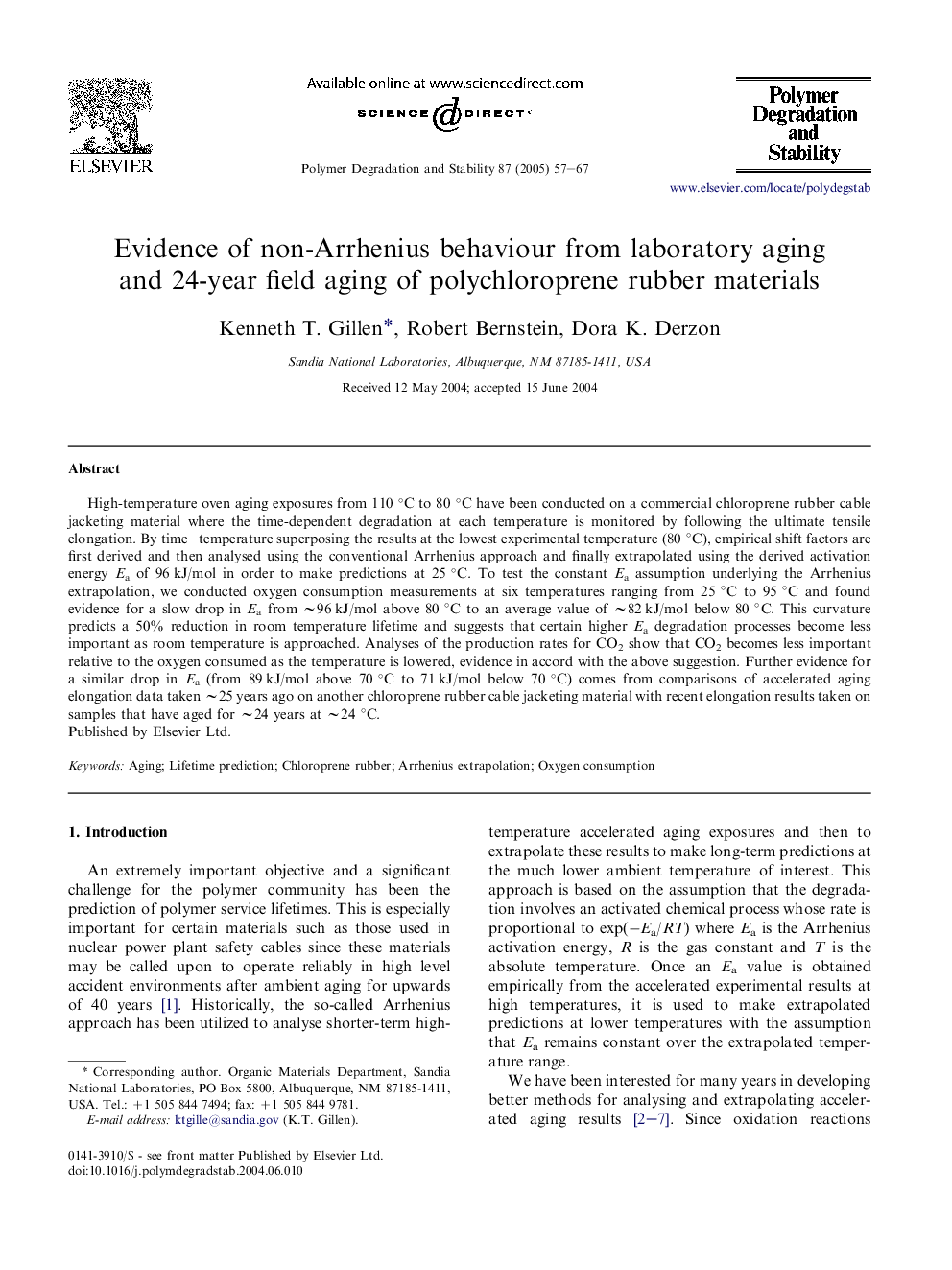| Article ID | Journal | Published Year | Pages | File Type |
|---|---|---|---|---|
| 9560323 | Polymer Degradation and Stability | 2005 | 11 Pages |
Abstract
High-temperature oven aging exposures from 110 °C to 80 °C have been conducted on a commercial chloroprene rubber cable jacketing material where the time-dependent degradation at each temperature is monitored by following the ultimate tensile elongation. By time-temperature superposing the results at the lowest experimental temperature (80 °C), empirical shift factors are first derived and then analysed using the conventional Arrhenius approach and finally extrapolated using the derived activation energy Ea of 96 kJ/mol in order to make predictions at 25 °C. To test the constant Ea assumption underlying the Arrhenius extrapolation, we conducted oxygen consumption measurements at six temperatures ranging from 25 °C to 95 °C and found evidence for a slow drop in Ea from â¼96 kJ/mol above 80 °C to an average value of â¼82 kJ/mol below 80 °C. This curvature predicts a 50% reduction in room temperature lifetime and suggests that certain higher Ea degradation processes become less important as room temperature is approached. Analyses of the production rates for CO2 show that CO2 becomes less important relative to the oxygen consumed as the temperature is lowered, evidence in accord with the above suggestion. Further evidence for a similar drop in Ea (from 89 kJ/mol above 70 °C to 71 kJ/mol below 70 °C) comes from comparisons of accelerated aging elongation data taken â¼25 years ago on another chloroprene rubber cable jacketing material with recent elongation results taken on samples that have aged for â¼24 years at â¼24 °C.
Related Topics
Physical Sciences and Engineering
Chemistry
Organic Chemistry
Authors
Kenneth T. Gillen, Robert Bernstein, Dora K. Derzon,
